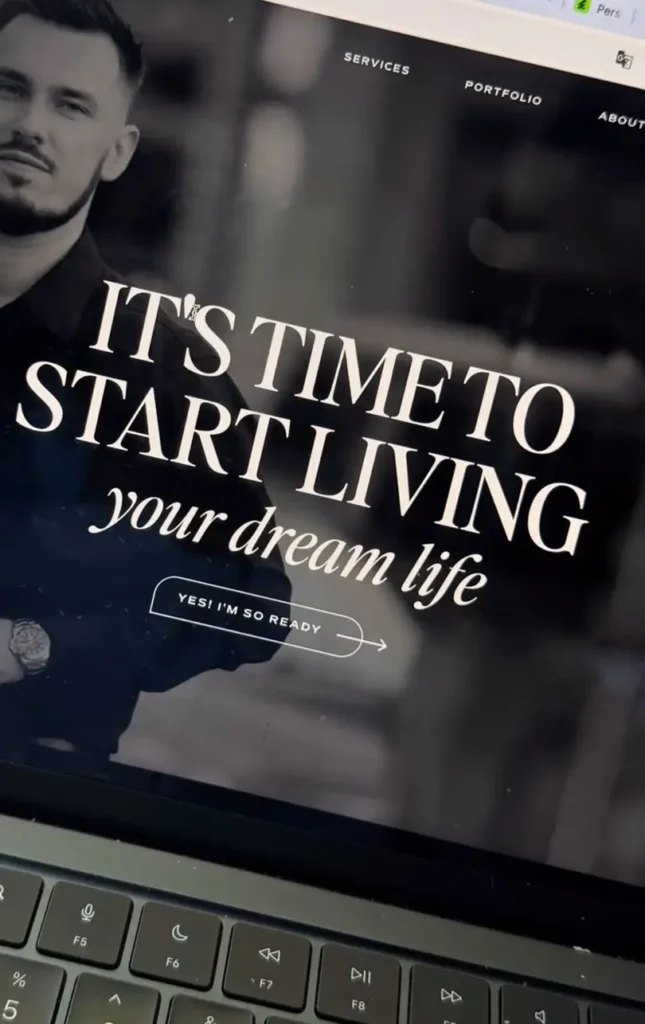Ten years ago, hardly anyone could have predicted that online shopping would become such a big part of our daily lives. Today it feels almost second nature. The main advantage? Convenience.

Shopping online is no longer anything special. You spend a few minutes scrolling, pick what you want, hit checkout – and before long, your new sneakers, a bag, or even a car show up at your door.
From the customer’s perspective, it all looks simple. A couple of clicks and it’s done. Simple and fast. No hassle and no waiting. But in reality, that click sets off a whole chain of events that most people don’t even notice. The order has to go through warehouses, delivery partners, through marketing funnels, customer support systems. And that’s just a small part of what business owners deal with every day.
Such giants as: Amazon, Shopify, Etsy, and eBay set their own rules. Each of the platforms offers its own advantages and disadvantages. This is usually the point where the fantasy of “easy money online” falls apart.
Ads love to sell the dream – fast cash, instant success. Reality looks different. In real e-commerce, you’re constantly fighting for attention. You’ve got to refine the customer experience, add personal touches, invest in ads, cut out inefficiencies, and learn how to predict demand. It’s a grind.
We sat down with Dmytro Lavryniuk to talk about what it really takes to get started without the stress and second-guessing. His program pulls Amazon, Shopify, Etsy, and eBay into one clear system. It doesn’t just cover tools and tactics – it digs into the psychology behind the process and shows how to use AI to cut out months of trial and error.
As Dmytro points out: “Online commerce isn’t killing retail stores. It’s just changing the role they play.”

Dmytro, let’s talk about e-commerce. How does it affect traditional retail? Are traditional stores suffering? What’s happening in the industry now? Is it growing or falling compared to traditional retail?
E-commerce has been growing for more than a decade, and it is not just a temporary trend, but a sustainable direction in retail. Its market share continues to grow year after year, and the pandemic has only accelerated this growth. More and more people are choosing online shopping because it is convenient, saves time, and offers a wide range of products.
But it is important to understand: online stores will not completely replace offline sales. They will transform them. I often hear predictions about the disappearance of traditional stores.
That’s a misconception. In many products categories, traditional retail still holds a significant share of the market.
For example, grocery stores and restaurants will always be offline. Although even they have already been approached by various delivery services like Instacart, DoorDash, Uber Eats. But this only strengthens them.
However, it is e-commerce that is setting new standards. People are increasingly accustomed to personalized recommendations using AI search, fast delivery and good service. Because of this, traditional retailers are forced to adapt by offering same-day delivery from stores and developing their digital services.
The fastest growing leading categories in online sales today are electronics, clothing, home goods and children’s goods. In these areas, online shopping has a clear advantage, since the customer can see a huge variety of products in a few clicks, compare their prices and characteristics.
The main entry points into online business have become large platforms such as Amazon, Shopify, Etsy and eBay. Amazon alone accounts for 40% of all online in the United States. They have turned the rules of the game upside down and have a huge impact on small entrepreneurs. So now, whether you have an online business or offline, you still need to be able to adapt to general trends.

Dmytro, you mentioned that each platform has its own rules and offers different opportunities. I have a question: how much time did you spend studying them?
My path in e-commerce began more than 10 years ago. At that time, there was practically no information on the market and I had to figure everything out myself.
The paradox of the present time and the past is that back then it was enough to make a good product and you could already get your first sales. But back then there was no information on how to open online stores, how to set everything up, and the difficulty of entering this business was greater.
Now, with the advent of many auxiliary services, training materials, marketplaces, entering the market has become as simple as possible. You can open your online store in two clicks. But simply publishing your product and getting sales is no longer enough.
At some point, I started to notice that the market was changing, and I was falling behind. Marketplaces were gaining more and more momentum, and I had to adapt. That’s where the first difficulties began.
To get the basic knowledge about each platform and figure out which one suited me, I had to go through 4–5 different courses.
To make their courses look more solid and substantial, every author added a lot of fluff. Because of that, I had to spend hours going through lessons just to extract 5% of real value.
Figuring it all out through personal experience cost me more than a year and tens of thousands of dollars in mistakes.
Is this why you decided to create your own course?
When you do the same thing for a long time, there comes a moment when you have an inner desire to give to people. To be useful. You want to move to a new level of the game called entrepreneurship.
When I lived in Ukraine, I created a new niche in the gift market with a small team. We developed a unique product and became the best in it. Later, in the U.S., I created the largest catalog of wall art for car enthusiasts and occupied this niche on Amazon.
Over the years, I have tested a dozen different stores – clothing, gifts, art, electronics. Opening another store no longer inspires me as much as before. So I set myself the task of creating the best e-commerce course.
What makes your course unique?
Like I mentioned, I started my entrepreneurial journey more than 10 years ago. Watching people, I noticed something important: no matter how great a tool you give someone, it doesn’t guarantee success.
Let me explain with a simple example. You can teach two people how to fish and give them the exact same fishing rods. When they go to the lake and fail to catch a single fish, one of them might think, “Maybe fishing just isn’t for me,” and quit. The other will start analyzing and changing the strategy—maybe trying a different spot.
The difference isn’t in the tool but in the mindset. One gives up at the first obstacle, while the other adapts, learns, and eventually succeeds. That’s the essence of entrepreneurship – it’s not about what you’re given, but how you use it.
The problem with most courses is that they only teach you a specific tool. But entrepreneurship is much more than that. You can’t become a boxer just because someone gave you gloves. And you can’t become an entrepreneur just by taking one Amazon course.
An entrepreneur is a unique type of person. It’s about mindset, character, resilience in tough times, discipline, the ability to take responsibility, and leadership to build a team. It matters less whether you use Amazon, Etsy, or Shopify – what really matters is the person behind it all.
That’s why, in addition to covering all the platforms, I dedicated a huge part of my course to lessons that transform you as a person.
The biggest mistake beginners make isn’t a lack of knowledge – it’s giving up too soon.

Is your course only for beginners?
For the most part, I wanted beginners to start their entrepreneurial journey the right way, avoiding many common mistakes. But now I realize that the course also works perfectly for those who have already tried something but feel stuck in the same place.
I designed my course by analogy with school. In school, you study a variety of subjects – you can’t graduate by learning just one. Entrepreneurship is the same: you need a comprehensive approach to see the bigger picture.
One of the most important components of success is psychology. When people start a business, their minds are filled with more fears and questions than answers: “What if it doesn’t work?” “What if I lose money?” “What if I’m not really an entrepreneur?”
It’s important to understand that entrepreneurs are not born – they are made. My course helps remove the very things that hold people back from taking real action.
Once my clients overcome the psychological barriers in their minds, absorbing the technical part becomes much easier and far more exciting.
Many people are thinking about starting on online platforms but keep putting it off. Why do you believe 2025 is the perfect time to begin?
Most people live under the illusion that one day the “right moment” will come. I’m 30 years old now, and I can say with certainty: the right moment does not exist.
The truth is simple: the right moment begins the day you stop waiting and decide to take action. Not when your fears disappear, but when you move forward in spite of them. Not when perfect conditions appear, but when you realize that perfect conditions will never exist.
“Waiting for the right moment means wasting your life. Start now, and the moment will become the right one.”
There will always be competitors. The market will always be changing. You will always lack some knowledge or resources.
But none of that is a reason to fold your arms and stop trying to change your life for the better.
E-commerce has many advantages compared to other businesses. First, you can organize everything without needing your own warehouses, offices, or inventory. You can build a business that gives you freedom.
Second, throughout the entire history of humanity, people have exchanged and sold goods. Everything around you – someone sold it to you. This skill will stay with you for life. Yes, it will change, but people will never stop buying products.
So, is it worth getting into online sales in 2025? The answer is absolutely YES! The market keeps growing, and more people are buying online every year. We are entering the era of AI technologies. They are taking e-commerce to a whole new level, and it’s crucial to start learning and adapting now – before you’re left sitting on the sidelines.
AI technologies, that’s interesting, tell me more.
AI technologies have begun to be used both in the creation of goods and by the marketplaces themselves. For example, Amazon recently launched its own AI assistant called Rufus. This takes product search to an entirely new level of user experience. It helps customers choose items, answers their questions, compares products, and most importantly – it allows the shopper to interact with it as if they were talking to a friend.
For instance, you can simply say: “I need a gift for a 12-year-old girl, something art-related under $30” – and Rufus will instantly suggest the best options.
This means that sellers now need to adapt their product pages for AI-driven search. AI also offers countless opportunities – both for creating unique products and for designing compelling, high-converting listings.
For example, when I first started selling car art, I had to hire designers to create the illustrations. But my latest collection was created entirely with AI. This not only reduced production costs but also gave me much more room for creativity.
Today, new technologies are opening up opportunities every single day.
What role do success stories play in student learning?
The stories are compelling because they are about people, not abstract concepts. When people see the results of others, it becomes much easier for them to believe in their own success.
Each story also contains practical lessons. I highlight what was done right and what could be improved. This way, students gain an eye for business before they even start their own project.
When a person starts anything new, they are always afraid of not getting results. My goal is to instill confidence and remove doubts. That’s why I created a large section where I analyzed dozens of different stores and their products.
Dmytro, what is the most important lesson you would like to convey to your students?
It is important to understand that a successful business is not a sprint. It is a marathon. The first three months are just about gaining momentum. We are not trying to get rich in one day, we will build a solid foundation for life.
Ultimately, the greatest reward is not just the business you create, but the person you become in the process. The discipline, resilience, and mindset you develop will stay with you forever. This is the true foundation of entrepreneurship – and the most valuable lesson I want my students to take with them long after the course is over.
•••
Publisher’s Note: Listening to Dmytro, it becomes clear that his course is not just an online sales manual, it is a path to personal transformation. Ecom-Guide gives students the tools to start a business, but more importantly, it helps them build an entrepreneurial mindset. This mindset is what enables people to keep moving forward when challenges arise. It’s this approach that makes his course truly unique.
Contact Dmytro Lavryniuk
Founder & CEO of ECOM-GUIDE
Website: www.dmytrolavryniuk.com
Instagram: @d.lavryniuk


















